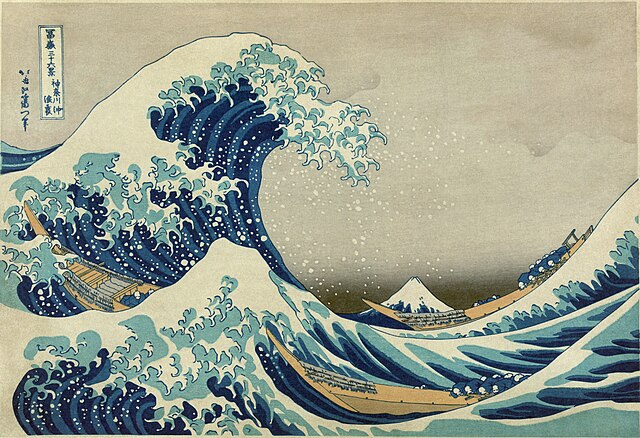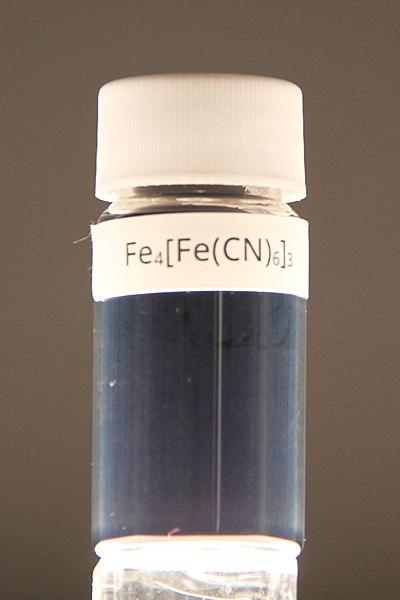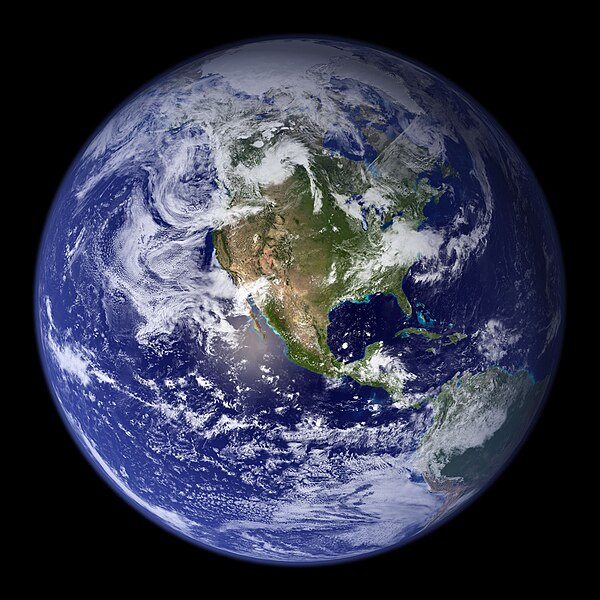Prussian blue is a dark blue pigment produced by oxidation of ferrous ferrocyanide salts. It has the chemical formula FeIII4[FeII(CN)6]3. Turnbull's blue is chemically identical, but is made from different reagents, and its slightly different color stems from different impurities and particle sizes.
Prussian blue
The Great Wave off Kanagawa by Hokusai, an artwork that makes extensive use of Prussian blue
Prussian blue in a vial
Simulated powder x-ray diffraction profile for Prussian blue crystal, crystallographic direction annotated. Image generated using CrystalMaker software.
Blue is one of the three primary colours in the RYB colour model, as well as in the RGB (additive) colour model. It lies between violet and cyan on the spectrum of visible light. The term blue generally describes colours perceived by humans observing light with a dominant wavelength between approximately 450 and 495 nanometres. Most blues contain a slight mixture of other colours; azure contains some green, while ultramarine contains some violet. The clear daytime sky and the deep sea appear blue because of an optical effect known as Rayleigh scattering. An optical effect called the Tyndall effect explains blue eyes. Distant objects appear more blue because of another optical effect called aerial perspective.
Image: 2010. Донецк. Карнавал на день города 010
Image: Iranian Tiles 1
Image: Cyanerpes cyaneus Diergaarde Blijdorp, Netherlands 8a
Image: NASA Earth America 2002








